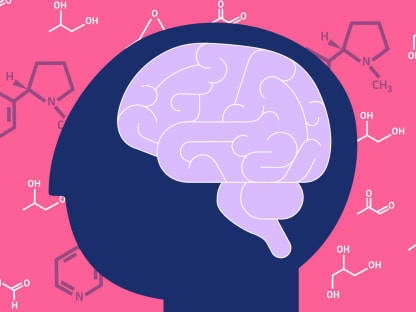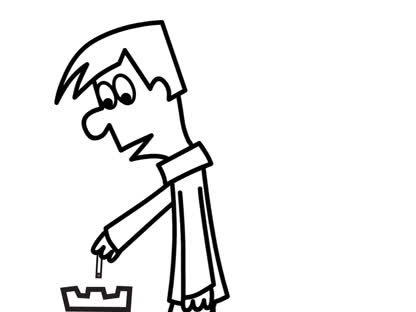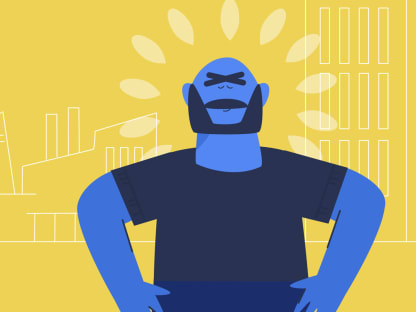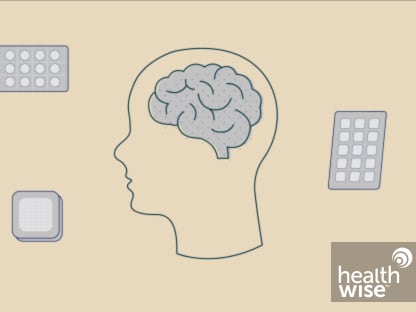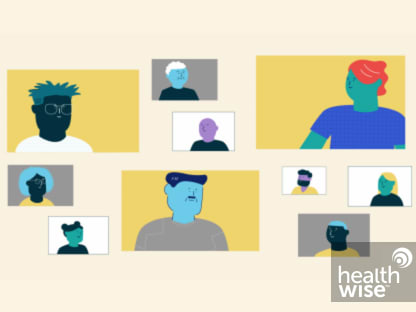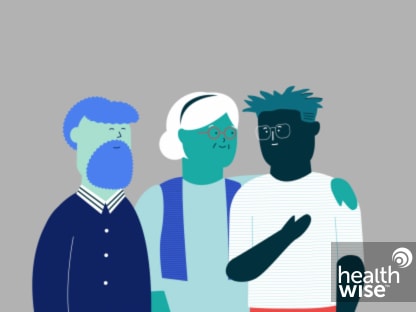Overview
Why quit smoking?
When you quit smoking, you'll start to feel real benefits over time. Within a few hours, your blood pressure will go down and you'll have more energy. In about a month, you'll breathe deeper and cough less. Over the years, your risk for heart disease, stroke, and cancer will go way down.
Is it ever too late to quit?
No, it's never too late. No matter when you quit, your health will improve.
People who quit smoking reduce their risks for cancer, lung diseases, heart attacks, strokes, and blood vessel diseases. They get sick less often and heal faster.
Quitting has other benefits.
- Your taste and your sense of smell may improve.
- Your clothes and hair won't smell of smoke.
- Your shortness of breath and your energy will likely get better after you quit.
And you'll help others when you quit.
- You'll reduce the health risks for your family members caused by secondhand smoke.
- Your kids will be less likely to start smoking.
- If you're pregnant, you'll help your baby get the oxygen needed for a healthy start.
How can you quit?
Having a plan and using medicines can help you quit. A quit plan helps you plan ahead. Before you quit, you identify the things that are likely to trigger tobacco use and plan how you'll manage them. You also think about what you need for support. Your doctor can suggest medicines to help.
Why is it so hard to quit?
Nicotine is addictive. Quitting is hard because your body depends on the nicotine in tobacco. It's also hard to quit because many things can trigger your desire to use tobacco, such as having a cup of coffee or finishing a meal. These routines can be very hard to give up.
Will you gain weight when you quit smoking?
Quitting tobacco may make you want to eat more or eat more often. That may lead to some weight gain after you quit. So in your plan to quit, be sure to include eating healthy foods and doing some physical activity. These things can help you manage your weight while you're quitting.
What if you start smoking again?
If you slip and use a little tobacco, don't give up. Talk to someone who has quit or to a counselor. Ask them for ideas on what to do. A slip could turn into regular use (relapse), so it's important to do something different soon.
Why Do You Smoke?
Most people don't think about when or why they smoke. They just do it. But knowing when and why you smoke can help you choose the quitting strategy that is most likely to work. Perhaps you smoke:
- To relieve tension, especially after arguments or during stressful times or when you feel angry, depressed, or upset.
- To satisfy frequent urges to smoke.
- To control your weight, either by keeping it down or because you're afraid of weight gain if you quit.
- For stimulation, or to focus, improve your concentration, or boost your energy when you have low energy.
- To be part of the group, by joining your friends in having a cigarette.
What reasons do you have for smoking?
Why children and teens smoke
Many children and teens use cigarettes, e-cigarettes, or other forms of tobacco because their friends do. Movies and TV shows can make tobacco use seem attractive. Teens may use tobacco to try to manage their weight.
Teens may think that using tobacco is a way to look more mature, independent, and self-confident to their peers. They may do it to rebel against adults. But children and teens are also influenced by their family. They're especially likely to use tobacco if their parents do.
Learn more
Watch
Benefits of Quitting Smoking
When you quit smoking, you'll feel real benefits over time. That includes having more energy, an improved sense of smell and taste, and more money in your pocket. And if you keep track of the ways that quitting has helped you over the hours, days, months, and years, it can help you quit for good. Here are a few good things to watch for.
The first hours or days
- Soon after you stop smoking, your blood pressure and heart rate will go down. That means there's less stress on your heart and blood vessels.
- Within days, you may notice that you have more energy as the level of carbon monoxide in your blood drops back to normal, making room for more oxygen.
Within weeks
- You may find yourself spending more time with family and friends, since you don't have to keep going outside for a smoke.
- Most of the symptoms of quitting, including cravings, anxiety, and insomnia, should begin to ease.
Within months
- When your lungs begin to clear, you cough less and breathe deeper, so it may be easier to be active.
- Your sense of taste and smell may improve. That means you may enjoy food more than you have since you started smoking.
- Your clothes, car, and home will smell less like smoke.
Over the years
- After 1 year, you could save a lot of money, depending on where you live and how much you used to smoke.
- Over the years, your risks of heart disease, heart attack, and stroke are lower.
- After 10 years, your risk of lung cancer is cut by about half. And your risk for many other types of cancer is lower too.
If any of these benefits sound good to you, today is a great time to take the first step to quit smoking. Your body will thank you in just a few hours.
Learn more
Watch
Quitting Smoking: How to Get Started
Know your reasons
If you're thinking about quitting smoking, you may have a few reasons to be smoke-free. Your health may be one of them.
- When you quit smoking, you lower your risk for many serious health problems, such as cancer, lung disease, heart attack, stroke, blood vessel disease, and blindness from macular degeneration.
- When you're smoke-free, you get sick less often, and you heal faster. You are less likely to get colds, flu, bronchitis, and pneumonia.
- As a nonsmoker, you may find that your mood is better and you are less stressed.
Have a quit plan
Having a plan can help you quit smoking.
- Know your reason for quitting. This helps you stay motivated.
- Set your quit date. Pick a time and stick to it.
- Change your surroundings and routines. Throw out your cigarettes, ashtrays, and lighters. If you can, avoid being around others who smoke.
- Prepare for emotions and cravings. If you feel stressed or cranky, try things like exercise, calling a friend, or finding a new hobby.
- Decide about medicine. Medicines and nicotine replacement products can increase your chances of quitting. They can relieve cravings and withdrawal symptoms.
- Get counseling. People who use phone, internet, group, or one-on-one counseling are much more likely to stop smoking.
- Try a quit-smoking program. Programs can help in person, over the phone, as text messages, on apps, or online. Look for a program led by someone who's trained in helping people quit smoking.
- Find support. Get help from people who can encourage you and help you deal with stress.
- Be prepared for relapse. If you slip up, don't blame yourself. It just means you may need to change your approach to quitting.
- Celebrate success. This helps make quitting feel within reach. And it reminds you why you're doing it.
Decide about medicine
The U.S. Food and Drug Administration (FDA) has approved several medicines to help people quit using tobacco. The medicines that doctors most often suggest are:
- Nicotine replacement therapy. This includes nicotine gum, patches, lozenges, nasal spray, and inhalers. You can buy gum, patches, and lozenges without a prescription.
- Varenicline (Chantix). This prescription medicine helps withdrawal symptoms and cravings. It also reduces the pleasure you get from nicotine.
- Bupropion SR.This sustained-release prescription medicine reduces withdrawal symptoms and cravings.
You won't have to take medicines forever—just for as long as it takes to help you quit. They increase your chances of quitting even if medicine is the only treatment you use to quit. Your chances are even better when you combine medicine and other quit strategies, such as counseling.
Your employer or health plan may help pay for medicines or for a quit-tobacco program.
Plan ahead to manage nicotine cravings and withdrawal
It's not easy to quit. Nicotine is addicting. When you try to stop smoking or using other nicotine products, you go through nicotine withdrawal. To help yourself through this time, plan how you will manage your cravings and withdrawal symptoms.
- Get support. Talk with your doctor and with family and friends about your plan to quit. Learn about programs and tools that can help you.
- Reduce stress. Without the nicotine, you may feel uptight and grouchy. Find healthy ways to lower your stress and cope with these feelings.
- Be more active. It may help reduce your cravings and relieve some withdrawal symptoms.
- Get plenty of rest. You'll feel better and be better able to cope with the stress of quitting.
- Use stop-smoking medicine or nicotine replacement. They can help you manage nicotine withdrawal and cravings.
- Distract yourself from cravings. You might chew gum or change the activity you're doing.
Learn more
Watch
Getting Support
One important part of quitting tobacco is getting help from people around you. This may include:
- Your doctor. They can prescribe medicines to help you quit and can help you plan the best way to use them. They can also refer you to counseling programs.
- Family and friends. They can provide a shoulder to lean on and help distract you when you want to use tobacco.
- Social networking. Many quit-tobacco apps for smartphones or tablets allow you to share your progress with friends and family. It's a way to get extra support and encouragement.
- Professional help. People who use telephone, group, one-on-one, or online counseling are much more likely to quit. You can try:
- The national tobacco quitline: 1-800-QUIT-NOW (1-800-784-8669).
- Professional help from a doctor, nurse, or therapist.
- Quit-tobacco programs, such as the Freedom from Smoking program (www.freedomfromsmoking.org) from the American Lung Association (www.lung.org).
Learn more
Watch
Dealing With Relapse
Most people who quit try many times before they quit for good. So if you slip and use a little tobacco, don't give up. Talk to someone who has quit or to a counselor to get ideas on what to do. A slip could turn into regular use (relapse), so it's important to do something different soon. If you are taking medicine or using nicotine replacement, keep doing so. And consider adding a new treatment, like one-on-one counseling.
If you relapse, don't feel bad about yourself. A relapse is just a sign that you need to try a different approach.
If you tried to quit without medicines or a program, think about trying them next time. Medicines and nicotine replacement (such as gum, patches, or lozenges) can help you succeed in quitting tobacco. If you smoke, they can greatly increase your chances of success. And using both medicines and counseling is even more effective.
To get back on track:
- Think about what made you start using tobacco again. Maybe you couldn't handle the cravings. Or maybe you didn't have enough support from family or friends. Maybe something stressful happened that triggered the urge, and then you couldn't stop.
- Learn to recognize when you might slip or relapse, and plan ahead to cope with those situations. People who relapse after not using tobacco for 6 weeks usually don't do it because of nicotine withdrawal. Instead, they relapse because they find themselves in situations that make them want tobacco.
- Make a list of things you learned. And think about when you want to try again, such as next week, next month, or next spring. Or you don't have to wait. If you're still motivated to quit, try again as soon as you want.
- Remember your reasons for quitting. Remind yourself that by quitting you may avoid serious health problems and live longer. Maybe you want to protect your heart and your health and live longer.
Learn more
Watch
Staying Tobacco-Free
To quit using tobacco, you have to learn how to deal with your cravings and temptations. But staying tobacco-free involves learning how to think and act like someone who doesn't use tobacco.
Many people who are able to make it through those first tough weeks without tobacco run into trouble about 3 to 4 weeks after they quit. Surprisingly, this is just about the time when physical cravings have stopped. And yet—people often go back to using tobacco.
Why does this happen? Some researchers found that staying tobacco-free may depend on how well you have been able to start seeing yourself as a person who doesn't use tobacco.
To help you make this change, think about spending time with other people who don't use tobacco. You could start going to an exercise class or a healthy-cooking class. Try any other activity that doesn't fit with your old view of yourself as a tobacco user.
You'll be able to enjoy and value a tobacco-free lifestyle when you:
- Realize from your experiences that you can cope with stress without tobacco.
- Face situations where you used to use tobacco and no longer feel like you need it.
- Find other ways to do things that you used tobacco to help you do in the past.
- Reject or move past your image of yourself as a tobacco user.
Learn more
Watch
Risks of Other Tobacco and Nicotine Products
Tobacco and other nicotine products are harmful and are not risk-free alternatives to cigarettes. They're addictive. They can cause serious health problems.
- Cigars and pipe tobacco. Cigars and pipe tobacco can be addictive. People who use them are still at risk for getting heart disease and cancers of the lung, head, and neck
- Smokeless tobacco. Smokeless tobacco, such as chewing tobacco, is addictive. It can lead to a greater risk of mouth cancer and tooth loss, gum disease, and other dental problems.
Vaping (e-cigarettes)
Vaping products contain chemicals that can be harmful and addictive. A deadly lung injury may be caused by vaping or using vaping products with THC (a chemical in marijuana) or other additives. Liquid nicotine can be poisonous if swallowed or spilled on the skin. Keep it out of children's reach. Vaping devices can also cause injury from explosions or burns.
Learn more
Related Information
Credits
Current as of: August 20, 2024
Author: Ignite Healthwise, LLC Staff
Clinical Review Board
All Ignite Healthwise, LLC education is reviewed by a team that includes physicians, nurses, advanced practitioners, registered dieticians, and other healthcare professionals.
Current as of: August 20, 2024
Author: Ignite Healthwise, LLC Staff
Clinical Review Board
All Ignite Healthwise, LLC education is reviewed by a team that includes physicians, nurses, advanced practitioners, registered dieticians, and other healthcare professionals.
